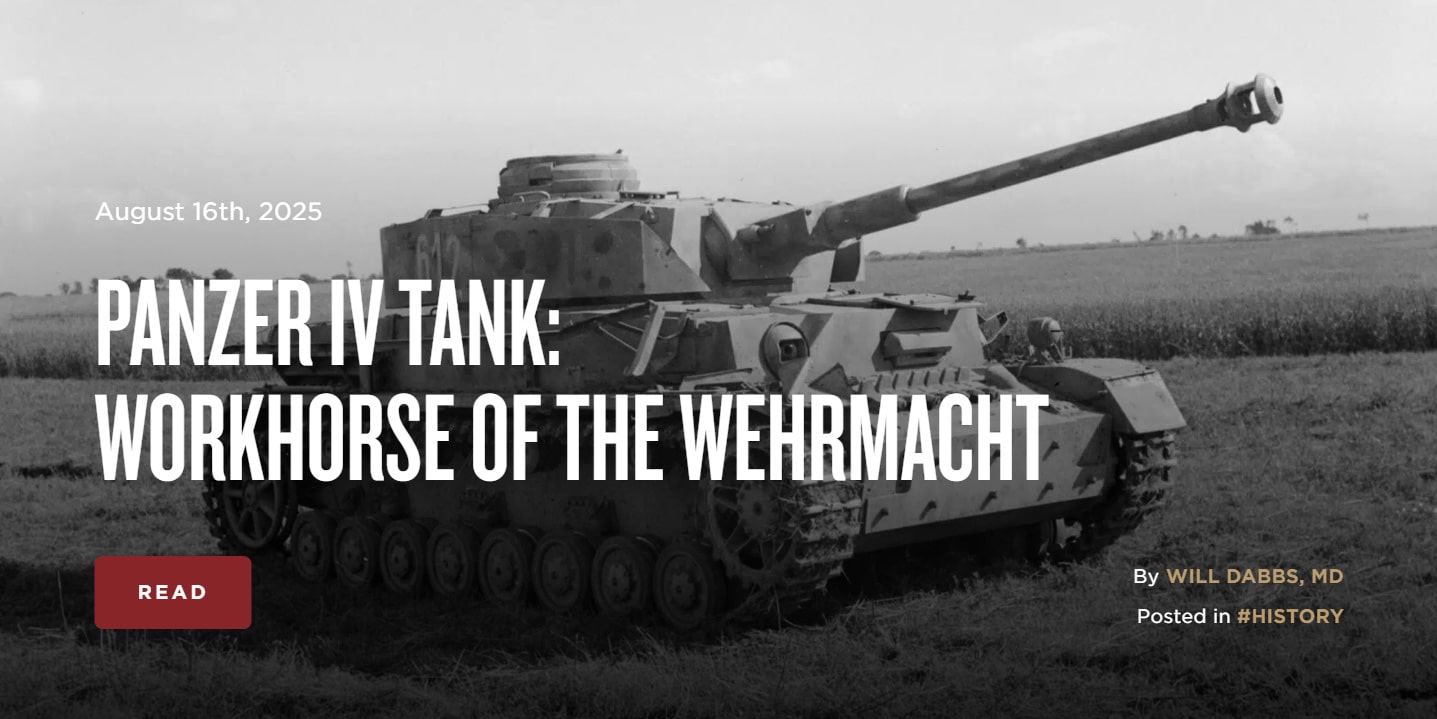Hello all, here is today's article posted on TheArmoryLife.com. It is titled “Panzer IV Tank: Workhorse of the Wehrmacht” and can be found at https://www.thearmorylife.com/panzer-iv-tank/.




Sounds like a T-34 as describedThe Panzer IV may have been more reliable, but it didn't have very good armor-wise & the gun on it was it's best attribute..
Basically it was a pre-WW2 design with a good gun, and cheaper & faster it build in order to get more hulls to the fronts.
I'd rather have a Mark IV or an M4 than a T-34. Sloppy production QC, no separate fighting compartment, hard to bail from, ammo QC issues, and the list goes on. The quantity is its own quality doesn't really apply to the T-34 as most think IMO.Sounds like a T-34 as described
Referring to mass produced, quick, cheapI'd rather have a Mark IV or an M4 than a T-34. Sloppy production QC, no separate fighting compartment, hard to bail from, ammo QC issues, and the list goes on. The quantity is its own quality doesn't really apply to the T-34 as most think IMO.

